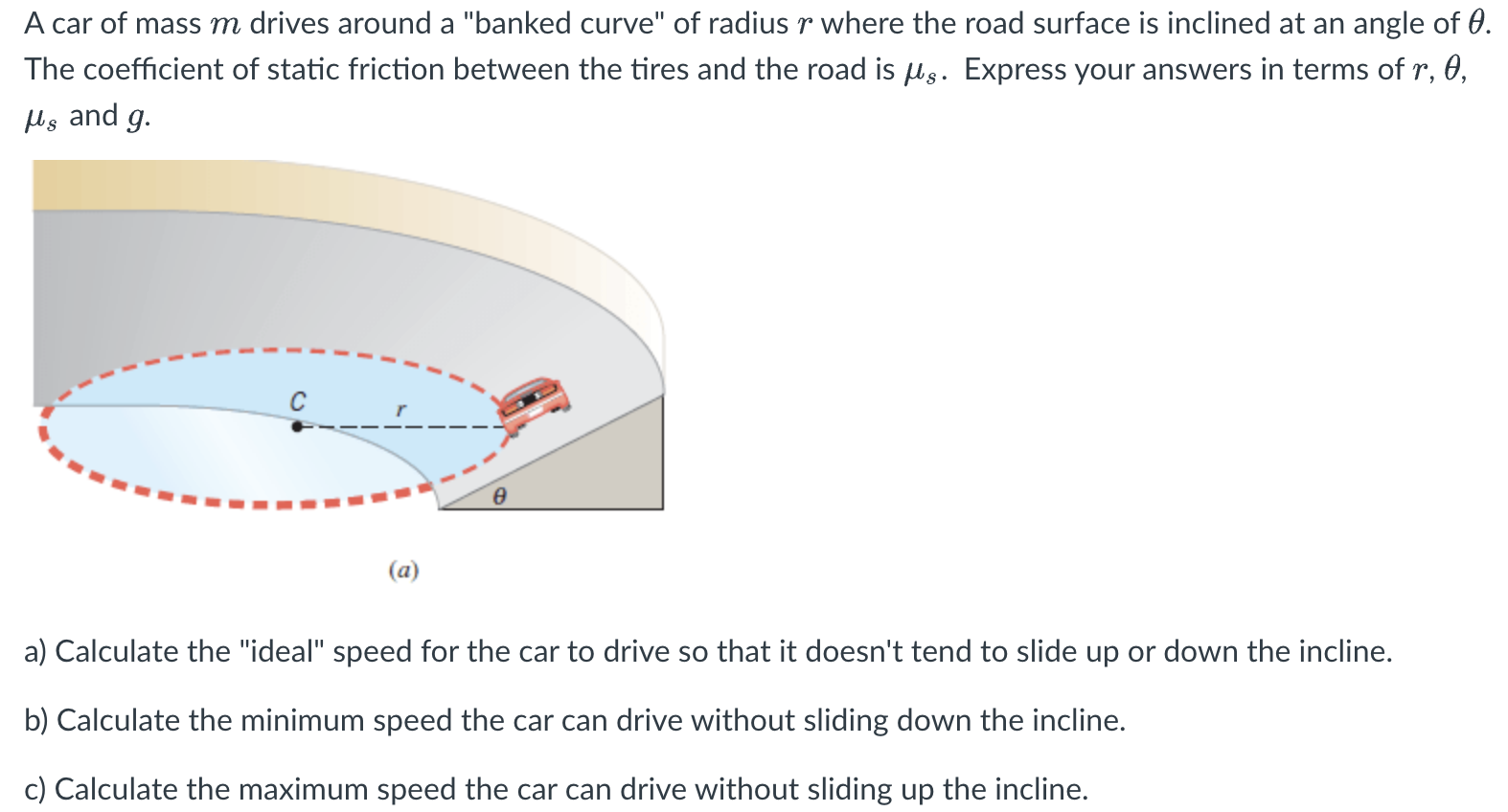A car of mass m drives around a "banked curve" of radius r where the road surface is inclined at an angle of θ. The coefficient of static friction between the tires and the road is μs. Express your answers in terms of r, θ, μs and g. (a) a) Calculate the "ideal" speed for the car to drive so that it doesn't tend to slide up or down the incline. b) Calculate the minimum speed the car can drive without sliding down the incline. c) Calculate the maximum speed the car can drive without sliding up the incline.
